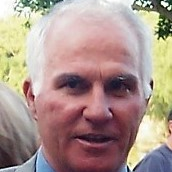Inland and Coastal Karst Aquifers: Functioning, Monitoring and Management
A special issue of Geosciences (ISSN 2076-3263). This special issue belongs to the section "Hydrogeology".
Deadline for manuscript submissions: closed (31 July 2018) | Viewed by 48378
Special Issue Editors
Interests: hydrogeology; karst; hard rocks; karst geomorphology; coastal aquifers; natural tracers; mass transport; contaminated sites; ground water monitoring; submarine springs
Special Issue Information
Dear Colleagues,
The special issue is addressed to either inland or coastal karst aquifers. They are both complex systems, but in the coastal ones the complexity of the variable-density flow joins to the complexity of the intrinsic features of the karst medium. In the karst aquifers located in areas with a climate that favours the human life the pressure exerted by an increasing demography and related activities (particularly the agriculture) involves a high (and growing) water-demand, which has frequently scarce chances to be satisfied due to the low natural availability conditions. Thus, water resources are subject to a perennial hydrological stress, along with pollution and, in coastal aquifers, also seawater intrusion/salinization. Compared to other aquifers, fresh waters of karst aquifers are of excellent quality for drinking purposes, thus deserving high attention: in many regions they represent the unique source not only for supporting the potable sector, but also the ecosystem services and the human activities.
The intrinsic features of karst aquifers and, for the coastal ones, the peculiar border conditions, make surely difficult to define their functioning and their vulnerability (which for coastal aquifers, is a 3D vulnerability), the rules for their management, as well as the future of water resources ensuing the climate change (and sea level rise).
The issue welcomes new insights and research innovations on both inland and coastal karst aquifers.
Tentative topics, however partial, are: measuring, monitoring and modelling approaches; role of faults; fractures and karst forms in pollutant transport and/or salinization; intrinsic vulnerability and vulnerability to salinization; relation of karst ground waters with groundwater dependent ecosystems; chemical processes at the land-sea interface and submarine groundwater discharge (its assessment and effects on the marine environment); chemical processes in the mixing zone in relation to tides and sea level change; direct, proxy or remote control of seawater intrusion/salinization; genesis and exploitation of submarine springs; management approaches involving technical and social dimensions.
Prof. M. Dolores FidelibusProf. Antonio Pulido Bosch
Guest Editors
Manuscript Submission Information
Manuscripts should be submitted online at www.mdpi.com by registering and logging in to this website. Once you are registered, click here to go to the submission form. Manuscripts can be submitted until the deadline. All submissions that pass pre-check are peer-reviewed. Accepted papers will be published continuously in the journal (as soon as accepted) and will be listed together on the special issue website. Research articles, review articles as well as short communications are invited. For planned papers, a title and short abstract (about 100 words) can be sent to the Editorial Office for announcement on this website.
Submitted manuscripts should not have been published previously, nor be under consideration for publication elsewhere (except conference proceedings papers). All manuscripts are thoroughly refereed through a single-blind peer-review process. A guide for authors and other relevant information for submission of manuscripts is available on the Instructions for Authors page. Geosciences is an international peer-reviewed open access monthly journal published by MDPI.
Please visit the Instructions for Authors page before submitting a manuscript. The Article Processing Charge (APC) for publication in this open access journal is 1800 CHF (Swiss Francs). Submitted papers should be well formatted and use good English. Authors may use MDPI's English editing service prior to publication or during author revisions.
Keywords
- Karst aquifer
- Karst coastal aquifer
- Seawater intrusion
- Anisotropy
- SGWD
- Groundwater dependent ecosystems (GDE)
- Monitoring
- Modelling
- Groundwater management






